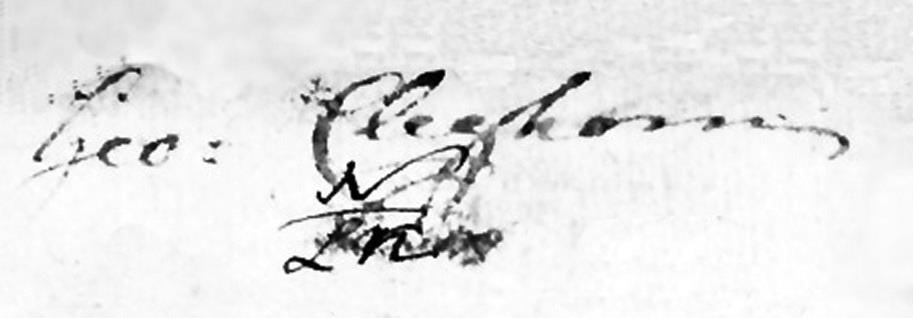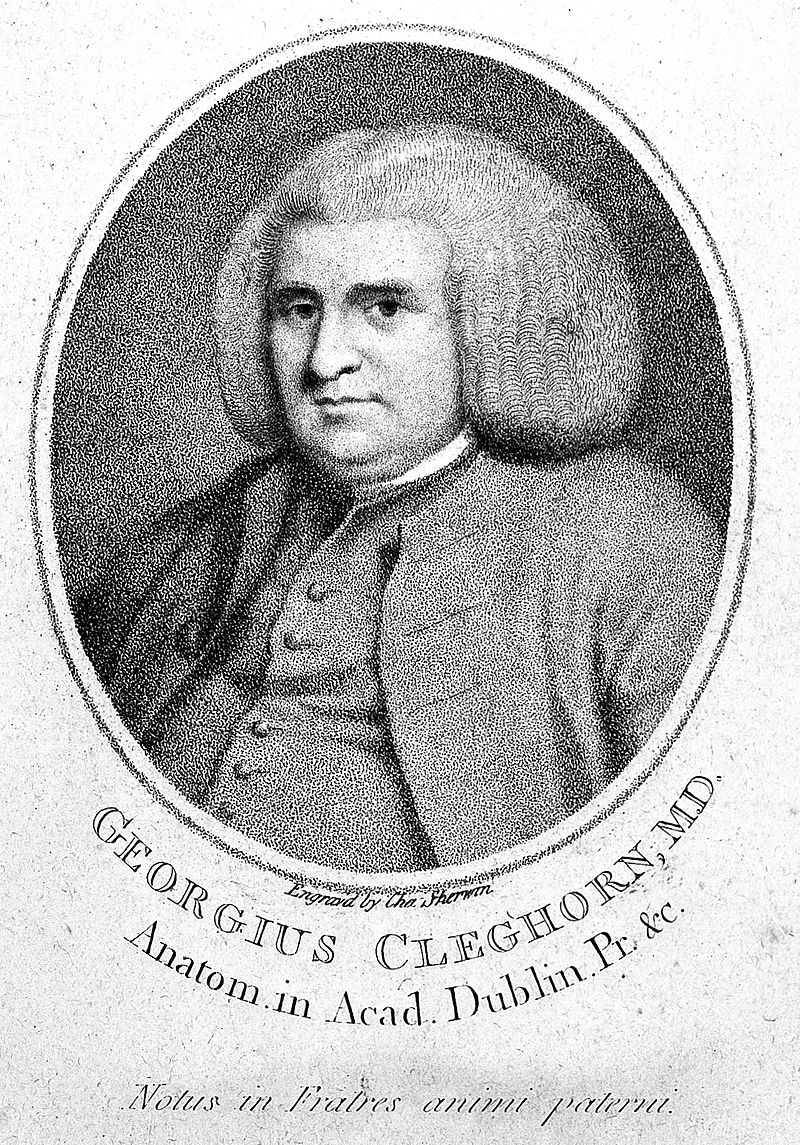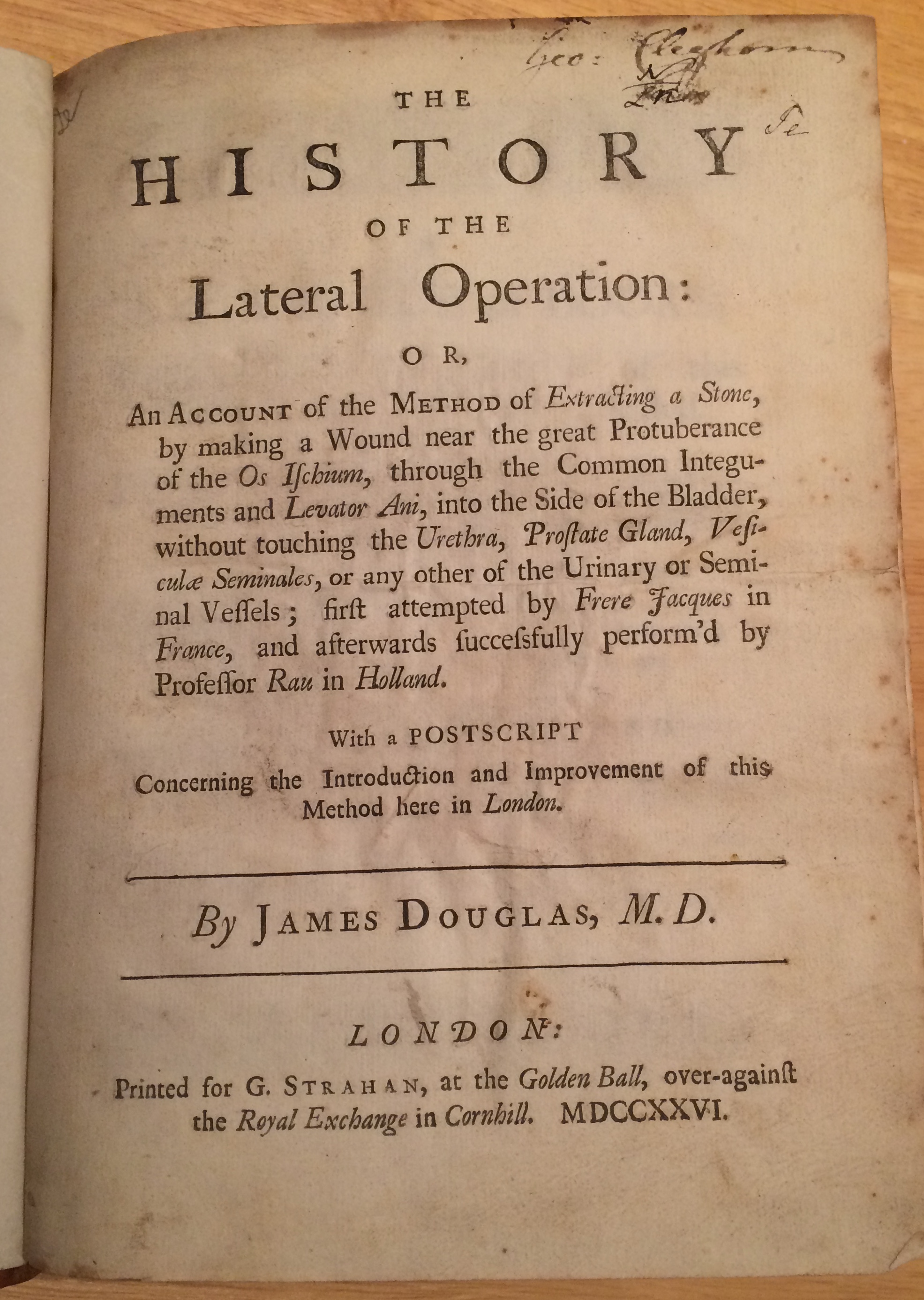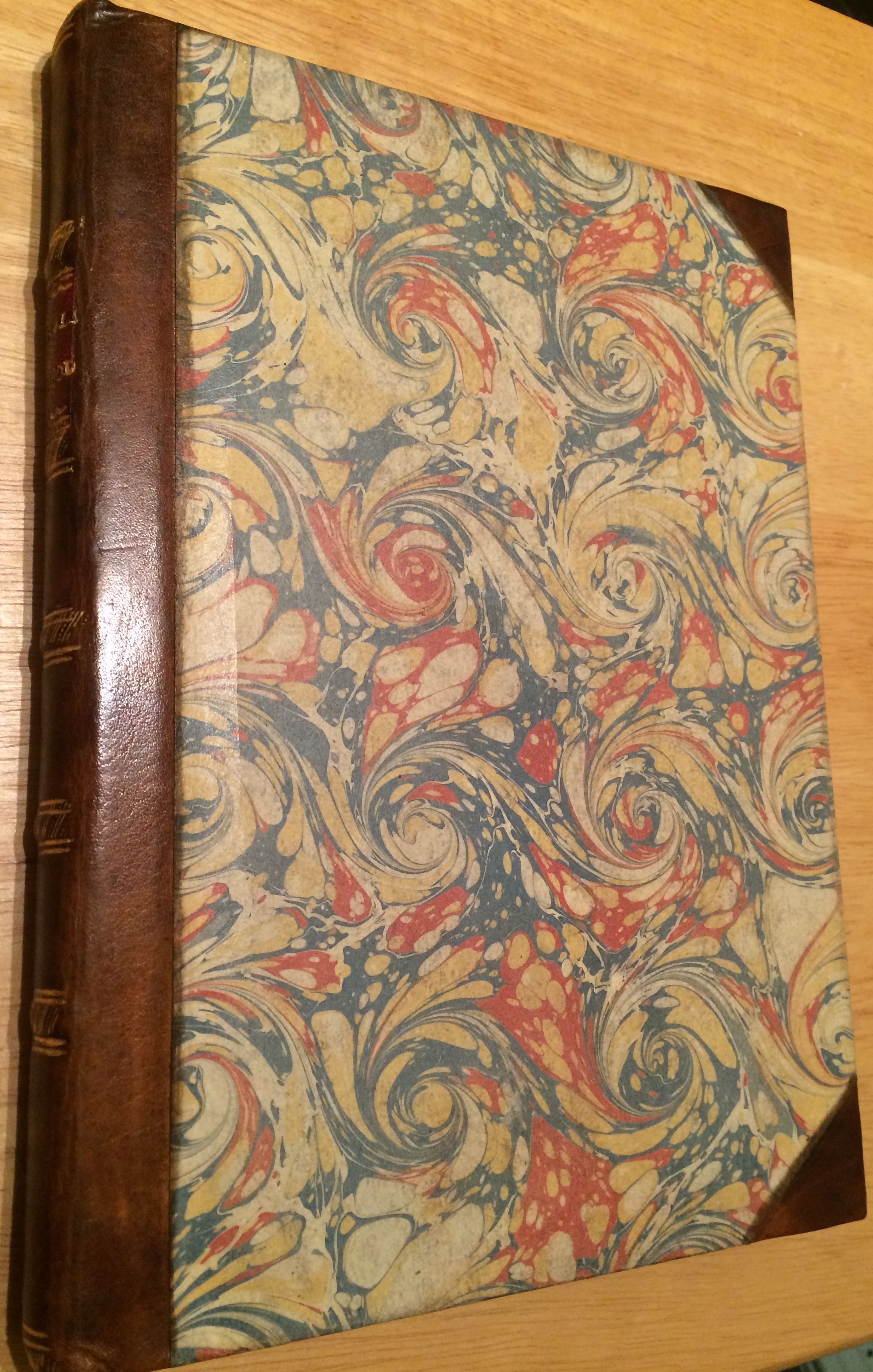Used quinine to treat malaria

George Cleghorn was a Scottish doctor who lectured in anatomy in Dublin.
Basically, this means that he talked about how the human body was put together and how it worked ...
He was also an expert in infectious diseases and expanded his knowledge while travelling Europe with the army.
His signature (right) was sourced from around 1726.
Biography
 Born near Edinburgh on 18 December 1716, George Cleghorn studied medicine (in those days it was called "Physic": Ed) in the University of Edinburgh. In 1736, he was appointed as a physician in the Army, and was posted to Menorca where he studied infectious diseases in great detail. In 1749, he was ordered to Dublin where he eventually settled permanently (in 1751).
Born near Edinburgh on 18 December 1716, George Cleghorn studied medicine (in those days it was called "Physic": Ed) in the University of Edinburgh. In 1736, he was appointed as a physician in the Army, and was posted to Menorca where he studied infectious diseases in great detail. In 1749, he was ordered to Dublin where he eventually settled permanently (in 1751).
He developed an interest in anatomy and started to lecture about it at Trinity College Dublin (basically, he talked about how the human body was put together: Ed). In due course, he was made Professor of Anatomy. His most important discovery, however, was made while he was in the Army, and it concerned insect-borne diseases. He was one of the first to realise that quinine could be used as a cure for malaria.
He must also have been interested in stones because a copy of James Douglas's "The History of the Lateral Operation" was found in his personal library. This book was written about one particular operation for bladder stones: the lateral approach for bladder stones ...
He died on the small farm he owned, near Dublin, in December 1789 at the age of 72.
Source of the Autograph
Cleghorn's signature was found in his personal copy of "The History of the Lateral Operation" (by James Douglas):
Read more about this book in the National Archives of Australia


← Back to Autograph Cupboard